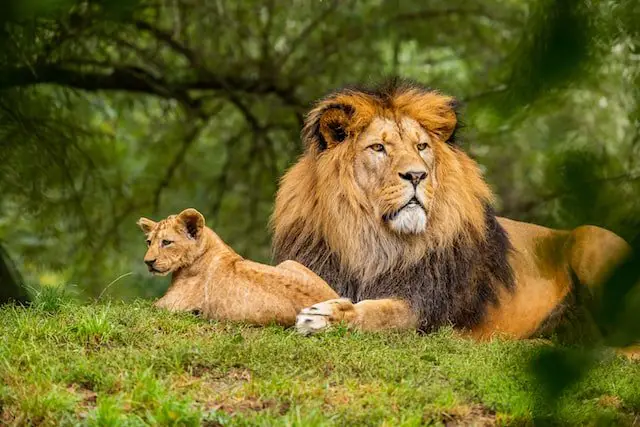On December 17, 2021, the Wildlife (Protection) Amendment Act, 2021, was introduced in the Lok Sabha. The bill proposes to implement the provisions of the Convention on International Trade in Endangered Species of Wild Fauna and Flora by primarily rationalising the Schedules of the Wildlife Protection Act, 1972 (WLPA) (CITES).
The regulation of the import, trade, possession, or spread of invasive species is a significant addition. The general public is encouraged to comment on the Bill.
The 1972 Act calls for the protection of specified species of plants and animals as well as the creation of a network of ecologically significant protected areas. It has undergone a number of modifications, and overall, the Act’s implementation has produced good results.
About 70% of the wild tiger population in the world is represented by the tigers (a flagship species) in India. In India, there are 53 tiger reserves. Indicators of the health of the forest ecosystems include the amount of forest cover in tiger reserves. In addition, there are 564 wildlife sanctuaries and 106 national parks in our network. A network of ecosystem service providers makes up a healthy network of habitats for wildlife.
Despite several wins and accomplishments, some areas still need greater attention. The topic of human-wildlife conflict requires ongoing special attention since wildlife habitats are improving and the human population is growing.
The ability of the forest department to handle emergency circumstances where a wild animal is in danger or has wandered into a human settlement, endangering both the animal and people around, has been impressively increased. But more direct action is needed to address the problem of wild animals damaging crops.
An environmentalist named Madhav Gadgil published an essay titled Rethinking wildlife conservation plan in this newspaper’s issue of February 25, 2022. He has harshly criticised the WLPA and then concluded that it should be legal for anyone to hunt wild animals for sport and trade. It would be beneficial to go over some of the broad and perhaps irresponsible claims that shouldn’t have come from a reputable national environmentalist—
“…a top police officer and a judge from the High Court have informed me that WLPA is unconstitutional.”
In fact, using the WLPA as a weapon, a dictatorial system governed by the forest departments has taken hold throughout the nation.
They (the people) might kill monkeys, cleanly package the meat, and sell it to Chinese or Africans.
Throughout the paper, Mr. Gadgil has recommended recreational hunting rather than offering any realistic strategies for wildlife conservation, as if wildlife management were the only thing that mattered and that it would resolve all managerial problems. It has been reported that up to 12,300 wild animals and birds are killed daily on shooting estates in Britain. Mr. Gadgil ignores the fact that nearly all of Britain’s original woodlands and fauna are now extinct.
The use of the word “people” a lot when describing impractical forest management practises has become fashionable. Although participation from people is necessary, it should not result in pandemonium. In order to achieve a noble goal and ensure the short- and long-term welfare of the populace, particularly those from communities who depend on forests for their subsistence, participation from the populace is a mosaic of roles that must be linked with appropriate rules.
Despite claims of public engagement, the true goal is frequently to undermine governmental authority over natural resources so that forests and ecosystems might eventually fall under the control of economic interests. In one of my books, The Crisis of the Tiger: Is There a Way Out?, these topics are covered in great length. as well as The Participation Dilemma.
The WLPA should be updated to address the pressing problems of human-wildlife conflict and public welfare. The proposed Act should specifically state the guiding principles for managing wildlife, which may include:
- Over hundreds of years, a complex biological process led to the current state of forests and wildlife habitats. They must be managed as living ecosystems, with an understanding that each of their parts is interconnected and has a distinct ecological importance.
- The habitats should be managed primarily for the ecosystem services they offer to humans, such as reducing the effects of climate change. Only a small percentage of the intangible benefits in the form of ecosystem services can be attributed to forests. Therefore, as a corollary, full ownership and control of forests should not pass to any public entity that lacks other funding streams for the preservation and management of its forests and cannot comprehend the significance of interdependent ecosystems and services.
- The existence of a network of interconnected, inviolate spaces is crucial for the maintenance of ecosystems and conservation of animals. These inviolate places, as well as the passageways they contain, must be carefully controlled (and when necessary, created).
- The primary right to use the usufructs in a planned, organised, and sustainable way belongs to communities that have historically relied on forests (including wildlife habitats).
- Killing wild animals for entertainment, profit, or leisure is wrong. When deciding between a wild animal’s life and the life or property of a person, the human life and property are always given preference. However, sport hunting practises that kill wild animals just for amusement, enjoyment, or trophy purposes go against all ethical standards and ecosystem management tenets. The fundamental tenet of handling this problem should be that people shouldn’t suffer as a result of being born in or close to a region with a lot of wildlife.
One of the main causes of human-wildlife conflict is animal damage to crops. However, the choice or potential for killing wild animals as a kind of entertainment or a way to make money is a barrier to the establishment of any cutting-edge tactics.

